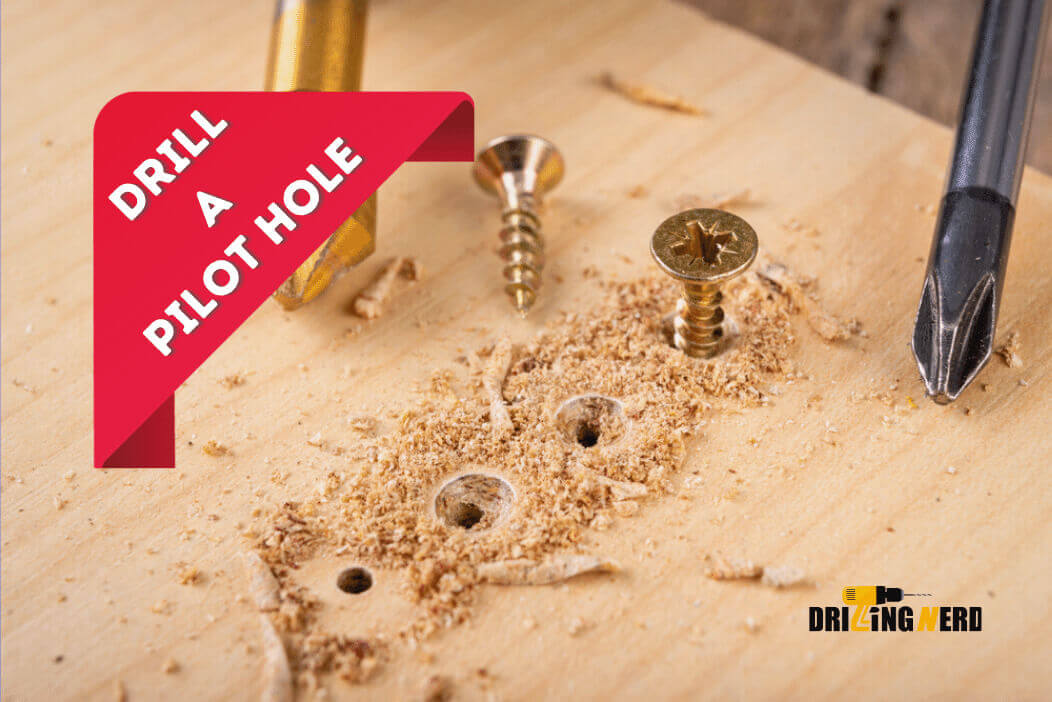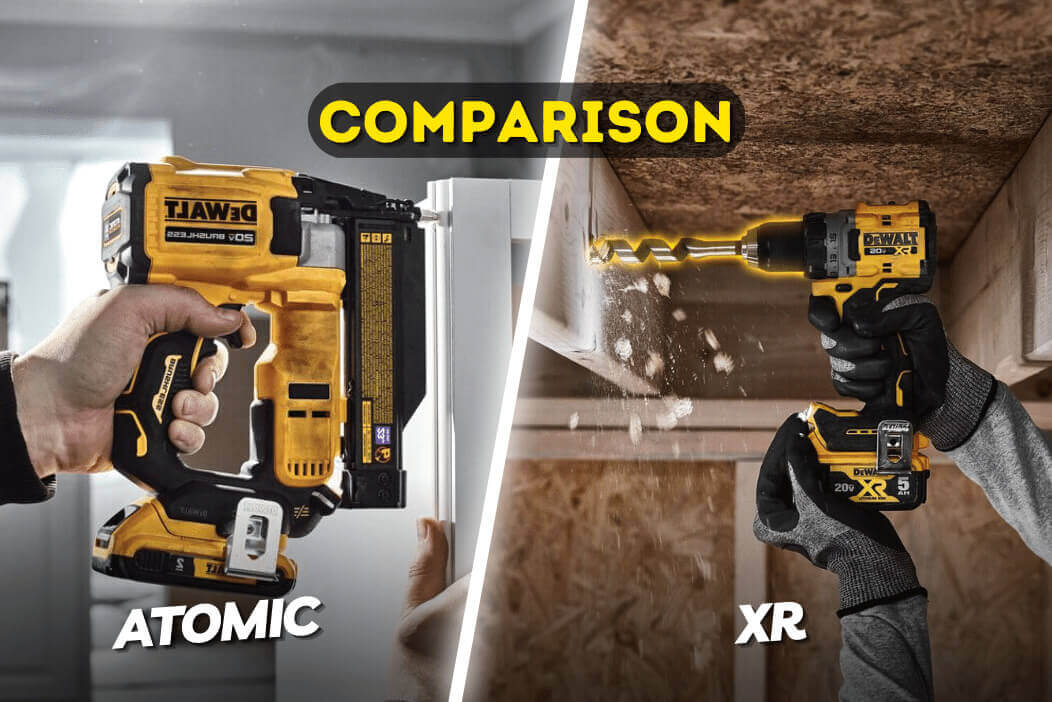All over the world, concrete is used in building materials. Thus, it is an important material that is used in building materials. Concrete is straightforward and robust, and multiple shapes can be created. The concrete is then used to make walkways, patios, sidewalks, driveways foundations, and walls.
Though it is still very dense, you can drill into it. Sometimes in a home or at the office, or anywhere, you can find a need to hang a Tv or picture onto a concrete wall and find a need to drill in some hangers. Or you are constructing a deck and need to fit it in the ledger. Drilling into concrete is easy, and whatever reason you have for drilling, you need a few tools.
In this blog post, I will discuss how to drill into concrete quickly, the best tool for drilling into concrete, and the best way to drill. We will guide you in all aspects of drilling. Keep reading.
Essential Things You Need:
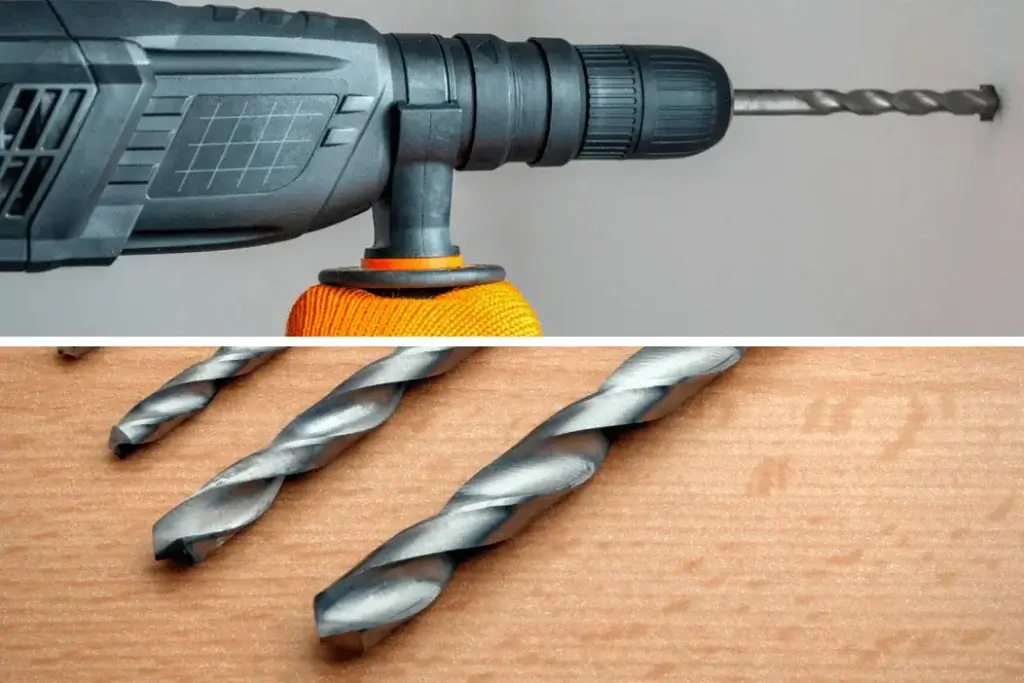
The primary and most crucial thing is that you need to know how to drill into the concrete. It is used on a massive scale in commercial and residential construction building materials. There will be a certain point in your life when you have to come in touch with it.
Nowadays, it is being used as a finish material. Poured walls, interior floors, and even countertops are a few examples. As its usage is increasing daily and is often used, you need to know how to use it. Drilling through concrete is easy if you have the right and accurate tools.
A drill is a must-have thing. Here a hammer drill or rotary hammer is the best option, and a good bit along with it. It is essential to have a certain amount of torque if you are using a standard drill. Tools that are needed and their in-depth analysis
Best Drill for Concrete:
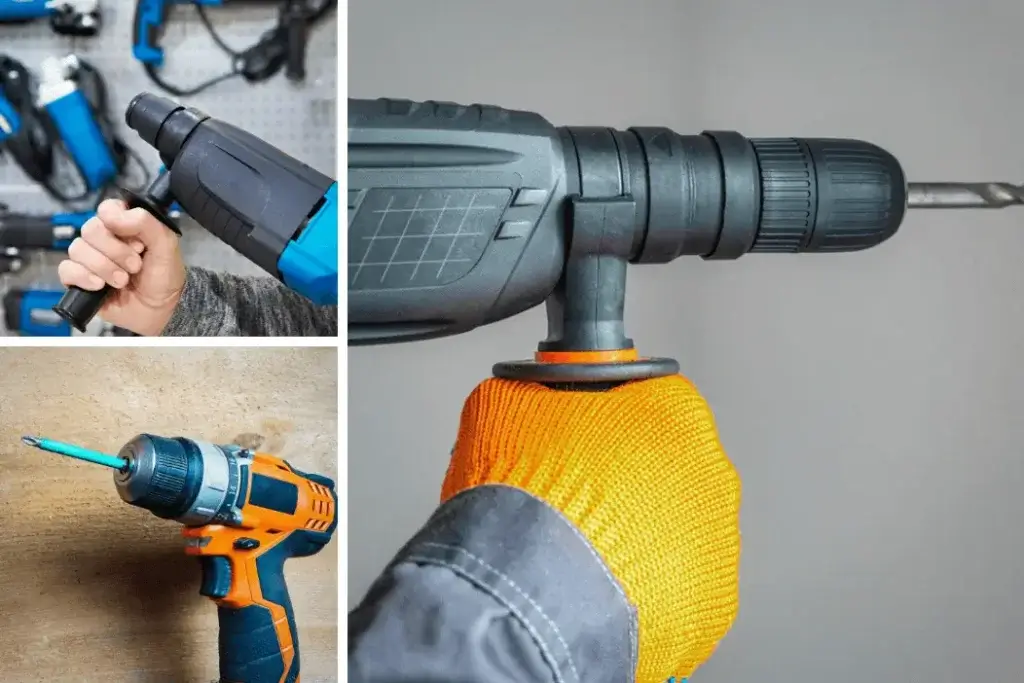
A rotary hammer or a hammer drill. Both have the same working function, but just different tools. It must have much torque if you want to use a screw gun or a standard drill.
Hammer Drill:
This kind of Drill has two essential functions. The working of this Drill is the same as the standard Drill when its hammer function is switched off. Once it is switched on, the Drill rotates as it vibrates. This oscillation will then help to run the drill bit into the material. An impact drill is a good option if you want to drill smaller holes into the concrete.
For drilling concrete for residential purposes, a hammer drill is the best available option. But for more significant projects, for example, drilling large lag bolts, you will need a rotary hammer. The hammer drills are far more expensive than a standard quality drill because of their extra function.
Rotary Hammer:
This Drill works similarly to a regular drill when its functions are turned off. Once it is turned on, it works like a jackhammer that also twists. The bit then goes back and forth in linear motion, which then hammers the bit into the concrete.
The other thing is that it works a bit smoother and is gentle to operate. Moreover, it drills faster, runs far quieter, and is more powerful. This hammer can do more excellent bores into concrete and drill even larger holes.
The rotary hammer classification depends upon the weight and size of its chuck. E.g., 50 pounds and 100 pounds. The most powerful rotary hammer is the one that is the heaviest. The best rotary hammer should be chosen according to the work you have to do.
Regular Drill:
If you want to drill tiny holes into the concrete, even a screw gun or standard Drill will be enough. Whenever there is a need to dig into concrete for minor fixes, a standard drill or a screw gun can work best. Again, they must possess much torque.
Using a tool with low power is not recommended as it might burn the motor. The standard drills are designed to be preferred for drilling into wood or metal. These drills can work for drilling into concrete, but you need to use the correct bit with much power.
I have plugged into the concrete using a regular drill, but it’s more rigid and takes a lot of energy and pressure. Unless the hole you need to drill is tiny, you should avoid using a conventional drill or screw gun. Not only would they need help to cope with deeper holes, but doing so might also damage the motor.
Best Concrete Drill Bit:
The drill bit must be correctly chosen for drilling into the concrete, and it’s essential to have the right bit. Without the right Drill, you can easily damage the surface. The concrete has a very high psi if it’s structural concrete and it’s a very dense material.
Every style of concrete bit looks different than wood or metal bits. Its head is relatively flat because it’s shaped and designed so that it crushes and chips the concrete as the drilling is done through it. By using a wood or metal drill bit, you get to cut off or trim the material as you drill into it.
When using concrete bits, you get the powder. The bit easily tears up or breaks up the concrete as it digs into it. It does not easily cut it. This process needs an intense bit and a stiff head often covered and coated with diamond dust.
Drilling Concrete is Easier than You Think with the Right Tools:
You will need to know how to drill into concrete correctly.
Using the right tools and following a few essential steps allows you to see how smoothly and quickly the drilling process becomes for you.
- Tape and a Pencil: To drill into concrete, you must first be sure where to hit as it’s permanent. So first mark that area by using tape and a pencil and then start drilling.
- Masonry Dust Mask: This kind of drilling forms much dust, which can be very unhealthy when you breathe. Here, a show is recommended to filter out the fine particles.
- Safety Glasses: Concrete dust is also nasty for the eyes. Here you need to wear protective gear whenever working on a construction site.
- Ear Protection: In addition to this, drilling in concrete causes a lot of noise pollution. For this, you need to Wear ear protection. It will help eliminate hearing loss.
- Compressed Air: It becomes helpful when cleaning concrete dust out of the hole before installing the anchor.
- Vacuum Cleaner: When drilling in concrete, the dust will spread everywhere. Concrete drills crush the concrete and then turn it into a fine dust.
Step-By-Step Guide:
- Step 1. Prepare the Drill Bit:

You must use a pencil and mark the concrete where you must drill the hole. At least check the measurements twice before proceeding ahead. Here you can also figure out how deep you must hit each spot before drilling. Here you can also use the drill stop bar to determine the exact depth of the hole you want to drill.
- Step 2: Get into Position:

Now wear safety goggles and now start to insert the Drill in the drill bit. Stand in an upright position, along with the tools, safely in your hands. The best place for the Drill in writing is to hold it like a handgun and hold it firmly on the auxiliary handle for more control. To ensure that a straight hole is made, the drill bit must be perpendicular or at a 90-degree angle to the concrete before starting.
- Step 3. Make a Guide Hole:

Now in this step, turn the Drill to the lowest setting. Now start to work in short, controlled bursts to create a guide hole approximately a 1/4in depth. It helps increase the Drill’s stability when you drill the exact spot.
- Step 4. Start Drilling:

Now carefully put the Drill into the guide hole and start drilling down with a firm and steady hand. Next, you can increase the pace or speed if you are confident and keep digging down into the concrete until you touch the stop bar or the scotch tape.
You must remember that the concrete has air pockets and small pebbles that can quickly change the Drill’s resistance level, making it very easy to lose control of it if you need to pay attention. If there are any obstructions in the way while you are drilling, don’t force the tool through it as it easily damages the bit, or you can quickly lose control or damage the surface of the concrete.
Further, if you run into any pockets that your drill won’t fit through, you’ll need to put it aside and switch to a hammer masonry nail to penetrate through the blockage carefully. After this, you can keep drilling.
- Step 5. Remove the Dust:
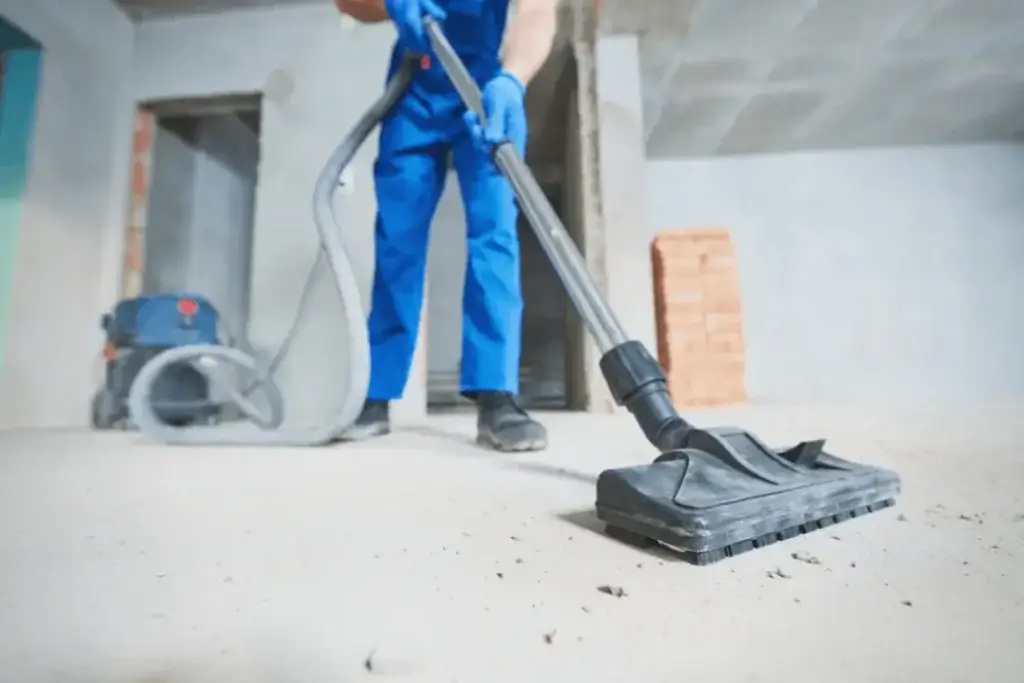
As the drilling continues, you should stop after a small interval, remove the tool and clean away the already built-up concrete dust. By stopping after every 20-30 seconds, you can also save the rotary hammer from overheating.
- Step 6. Complete the Hole:

When you reach the hole’s proper depth, immediately remove the Drill and clean the remaining dust with compressed air. And then, use a vacuum to remove everything that hits the ground after cleaning.
- Step 7. Start the Next Hole:
This process must be followed for every hole. Also, give the hammer drill the right amount of time to cool down.
Essential Tips You Need to Know:
Here are a few tips to keep in mind when using a traditional drill.
1. To drill a hole with a large diameter, start with a small hole and then move ahead. For drilling large holes, standard drills will have less power. It needs many drill bits, but it makes the process easier.
2. Drill in a little at a time. Try to drill at different times. First, Drill a quarter inch at a time. Please take out the Drill, let it cool blow the dust away. Less torque is needed with a clean hole and a significant bit.
3. a) If any stone is hit, immediately remove the Drill and put it in the nail.
b) breaking the rock into pieces will make it easier to drill afterward. Such a technique saves a lot of money.
Frequently Asked Questions:
Bottom Line:
It is a viral building material. Very quickly made and very strong and can be easily formed in various shapes. Its uses include building patios, sidewalks, countertops, and even walls. Though it’s very dense, you can still drill in it if you want to hang a tv or picture on a wall and need to prepare in some hangers.
Whatever the reason for drilling is into concrete, if you have the right tools and know how to use them and in which situation to use which Drill, you can quickly drill into concrete without any hassle and damage.
Drilling holes in concrete is hard work. You need to measure carefully, and you need the right tools. All you need is a good power drill and masonry bit. Because of their ability to drill and hammer the bit into the concrete, rotary hammers are ideal.
Hammer drills are great, too, because they have a vibrating feature that helps the bit get through the concrete. But a standard drill can do the job too. A masonry bit is what’s truly essential. With a good bit, no matter what type of Drill you use, you will get through the concrete.

